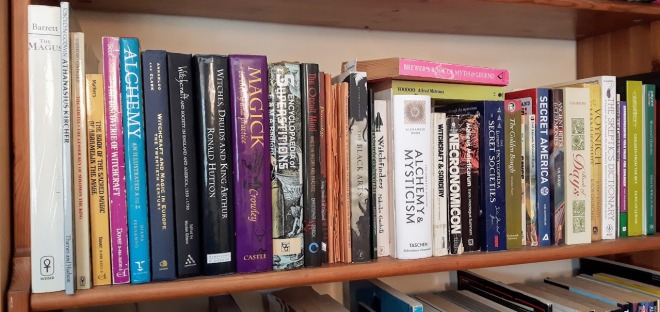If you know me, you will know that I have been fascinated with the engimatic Saint Amphibalus ever since someone (my MA supervisor, maybe) told me about him back when I was doing my MA. If you’re not familiar with Amphibalus, here’s the scoop:
Saint Alban is one of the most important British saints; I think he’s the oldest? If not, he’s close. He was (the story goes) a guy in Roman Britain who protected a priest fleeing from persecution. Observing the priest’s humble, self-sacrificing piety, Alban was moved, converted to Christianity and wound up getting martyred, as one does. In most of the early sources, the mysterious priest is just called “the priest.”

In the 12th century, good old Geoffrey of Monmouth is writing The History of the Kings of Britain, and in it he gives the priest the name Saint Amphibalus. It’s amazingly unlikely that Geoffrey had access to some evidence about the guy’s real name, assuming he ever existed at all, but what we don’t know is whether he just made the name up or whether he was recording what people were calling the priest at the time. The name may be a mistranslation based on a word for “cloak” — there’s a bit in the story where Alban and the priest swap cloaks to help the priest evade capture, I guess?
About 40 years after Geoffrey, the abbey of Saint Albans discovered the body of the saint, presumably in an effort to kickstart a lucrative relic cult that would help them out of their financial difficulties. That kind of thing happened all the time in the middle ages. Some historians believe that the bones dug up and identified as Amphibalus belonged to a pagan Anglo-Saxon burial, which I think is speculative but not implausible.
Anyway, why do I mention this? I mention it because this past weekend I was in Saint Albans visiting family, and I got to go to the cathedral for the first time. Now, there’s a lot to write about about that cathedral, much more than I can really cover in this post: it’s got a lot of preserved 12th-century material! It reuses Roman stuff! It’s sited outside the Roman settlement on a cemetery location! Christina of Markyate! In short, it’s got all the things I love about a medieval cathedral.

And it’s also got the shrine of Saint Amphibalus:

As you can see, the shrine is pretty beat up, but that doesn’t mean that Amphibalus is no longer popular. Dear me, no! In fact, we happened to turn up during the festival that celebrates the feast day of Saint Alban, so we got to see some proper material expressions of popular piety in the form of the huge puppets and various costumes used during the procession.



I know it sounds like I’m making fun, but it’s actually nice to see Amphibalus still part of the life of the community. He may be made-up, or at least heavily embellished; indeed, he may be a combination of legend and pious fraud, but I’m awfully fond of him and I’m glad he’s still around.


